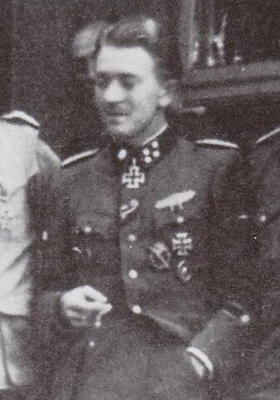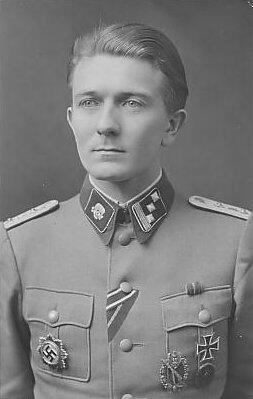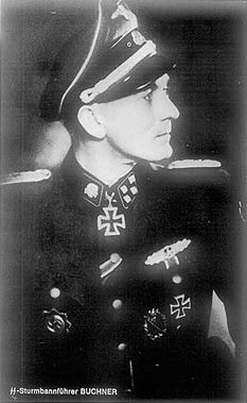awards
|
promotions
|
early life and career
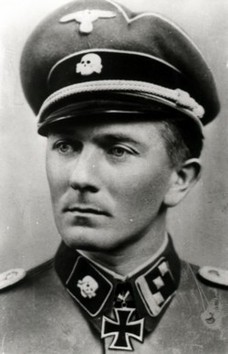
Hermann Buchner was born Jan. 16, 1917. He attended college to be a phamacist, and eventually joined the Waffen-SS. He attended officer canidate school, but dropped out once, and barely passed his second attempt.
After graduation, he was assigned to SS-TK-Inf.-Rgt.-1. He served as an adjutant to 3. Battalion through the campaigns in France, and saw combat, winning the Iron Cross 2 Class. In the early parts of Operation Barbarossa he was involved in heavy close combat fighting. During the Demjansk encirclement he was again in close combat, and was wounded by shrapnel, but returned to his unit. He was awarded the Demjansk shield. He also recorded many days of close combat or "melee days."
When he earmed the Knight's Cross he was the 3. Battalion Kommandeur in our regiment. He led an infantry attack on a heavily defended position without any heavy armor or artillery support. He not only succeeded, but took comparitvely minimal casualties, and hundreds of Russian prisoners. He was also awarded the Tank Destruction Badge, , German Cross in Gold, the Wound Badge in Gold and the rare Close Combat Clasp in Gold!
After graduation, he was assigned to SS-TK-Inf.-Rgt.-1. He served as an adjutant to 3. Battalion through the campaigns in France, and saw combat, winning the Iron Cross 2 Class. In the early parts of Operation Barbarossa he was involved in heavy close combat fighting. During the Demjansk encirclement he was again in close combat, and was wounded by shrapnel, but returned to his unit. He was awarded the Demjansk shield. He also recorded many days of close combat or "melee days."
When he earmed the Knight's Cross he was the 3. Battalion Kommandeur in our regiment. He led an infantry attack on a heavily defended position without any heavy armor or artillery support. He not only succeeded, but took comparitvely minimal casualties, and hundreds of Russian prisoners. He was also awarded the Tank Destruction Badge, , German Cross in Gold, the Wound Badge in Gold and the rare Close Combat Clasp in Gold!
death
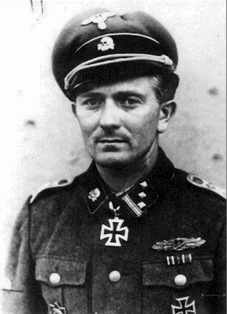
He was one of few men in the entire German army to be awarded every single bravery medal. He was also the 4th member of the German armed forces to win the prestigious Close Combat Clasp in Gold, eventually recording over 60 "melee days" or days spent in close combat. In July and August of 1943 alone, he recorded 20 days of melee.
Unfortunatley he was killed in action, West of Warsaw in November 1944, when he was hit in the back by shrapnel. A warrior this good already had his fate sealed. A man can only do the things he did for so long before it will catch up with him.
Although he did poorly in his officer classes, he was still promoted quickly, and ended the war as a Major, or SS-Sturmbannfuhrer. He was notably a very brave man, and a great leader of men. He also was one of few SS Knight's Cross Winners who never joined the Nazi Party, and apposed many of Hitler's policies. His quick climb up the ladder is truely a testiment to his excellent service with SS-Division "Totenkopf
Unfortunatley he was killed in action, West of Warsaw in November 1944, when he was hit in the back by shrapnel. A warrior this good already had his fate sealed. A man can only do the things he did for so long before it will catch up with him.
Although he did poorly in his officer classes, he was still promoted quickly, and ended the war as a Major, or SS-Sturmbannfuhrer. He was notably a very brave man, and a great leader of men. He also was one of few SS Knight's Cross Winners who never joined the Nazi Party, and apposed many of Hitler's policies. His quick climb up the ladder is truely a testiment to his excellent service with SS-Division "Totenkopf
DISCLAIMER: 2. Kompanie is a non-political organization We do not support naziism, or fascism. We are not associated with nor do we condone the actions of the Third Reich or the actual 3.SS Division.
